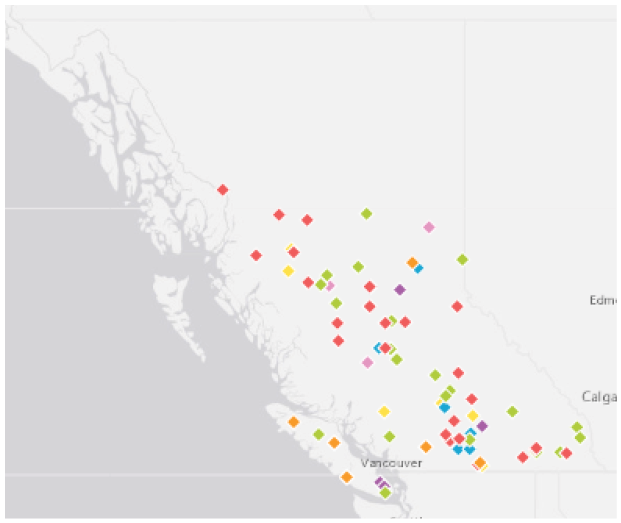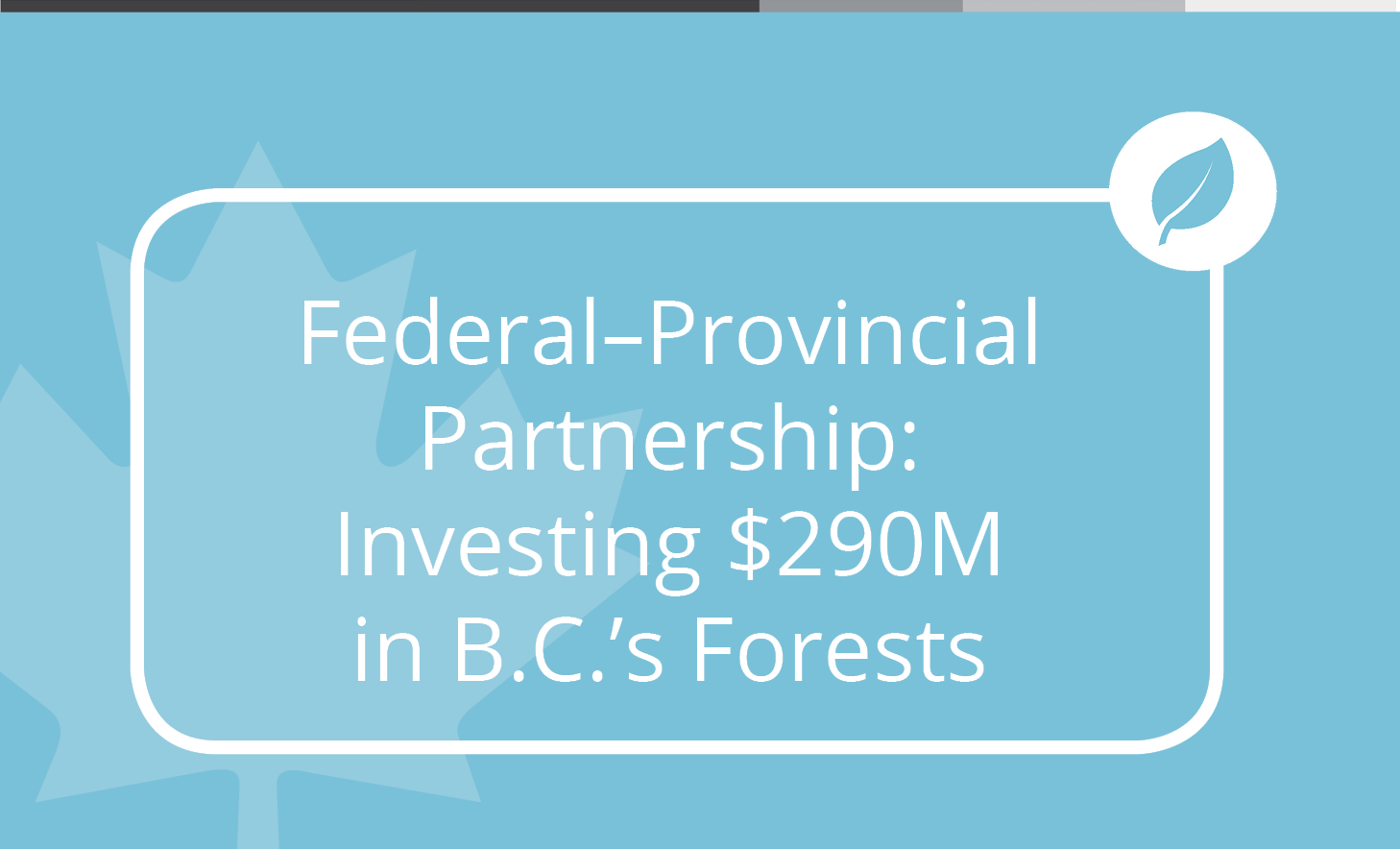Forest Carbon Initiative
Forest management can generate greenhouse gas (GHG) benefits, either by increasing carbon sequestration (storage) or by avoiding emissions. Activities such as reforestation, fertilization and tree improvement can significantly increase carbon sequestration in forests, while reducing slash pile burning decreases emissions and improves air quality.
In 2021, the Ministry of Forests committed to a consolidated Forest Investment Program. This program combines incremental government-led forest investments previously managed by the Forest Carbon Initiative and the Forests for Tomorrow program. Learn more about the Forest Investment Program.
Recognizing this potential, the Province of British Columbia (B.C.) and the federal government partnered to invest in forest carbon projects across the province.
The Forest Carbon Initiative (FCI) was launched in 2017 as a key element of B.C.'s commitment to take action on climate change. FCI helped meet provincial and federal climate change targets by delivering GHG benefits in the short term (2030), medium term (2050) and beyond through investments on the land base, changing practices, and education and outreach.
B.C. partnered with the Forest Enhancement Society of British Columbia (FESBC), BC Timber Sales (BCTS), Forests-for-Tomorrow (FFT) and others to deliver FCI.
FCI was supported by funding from the federal government's Low Carbon Economy Leadership Fund (LCELF). Together, the province and federal government committed $290 million to FCI from 2017/18 to 2021/22.
Forest Carbon Initiative activity types
FCI managed forest carbon by investing in projects throughout the province. Learn more about the different types of forest carbon activities below and through the FCI Project Portal.
Reforestation
Most healthy forests have a positive carbon balance - they absorb more GHGs from the atmosphere than they emit. However, when a severe natural disturbance occurs (e.g. insects, wildfire, etc.) that causes trees to die, these stands shift from being a carbon sink to a carbon source. Many forested areas across B.C. have been impacted by these types of natural disturbances as well as disturbances related to human activity (e.g. oil and gas activities, road construction, etc.).
Reforestation projects involve planting trees in areas affected by natural disturbances. Compared with natural forest regeneration, planting accelerates the rate at which these areas return to being a carbon sink. Learn more about Reforestation (PDF, 991 KB).
Fertilization
Nutrient deficiency limits how fast and large trees grow and is thought to be common across B.C.’s forests. To boost forest productivity, the province has been fertilizing forests for decades. Periodic applications of nitrogen and other essential nutrients benefits forest growth and increases the amount of carbon they sequester and store. Supplemental fertilization through FCI increased the area treated in B.C. by approximately an additional 80,000 hectares of forest between 2017 and 2023. Learn more about Fertilization (PDF, 167 KB).
Fibre utilization
When logging takes place in B.C., some residual wood fibre is typically left behind. To reduce the risk of wildfires and free up space for new trees to be planted, it is common to pile and burn wood waste during ideal weather conditions. This practice, known as slash pile burning, impacts local air quality and increases GHG emissions.
Instead of burning wood waste in piles, this fibre can be transported off-site to be used for bioenergy in place of fossil fuels, pulp/paper and other products, reducing GHG emissions. Learn more about Utilization and residue burning (PDF, 280 KB).
Road rehabilitation
Natural resource roads are built on provincial land in association with timber harvesting and other industrial activities. While these roads provide access for many activities such as recreation, hunting, fishing, range and managing silviculture obligations, many roads have become unnecessary or un-managed over time. In many cases, when roads are not maintained, the density of roads in a landscape is inappropriate for the management of wildlife, water or public safety. Rehabilitating roads through decompaction, site preparation and planting provides an opportunity to improve timber supply, restore wildlife habitat, and to sequester carbon. Learn more about Road rehabilitation (PDF, 85 KB).
Tree improvement
Young forests that are healthy, fast-growing and adapted to future climate, will capture additional carbon as they mature. Through tree breeding, tree seed orchards and associated activities, the tree improvement program provides improved seed for B.C.’s reforestation programs. Plantations established with improved seed grow faster, are better matched to the future climate and in some cases are more resistant to pests. Within FCI, a targeted set of tree improvement projects aimed to increase the amount of improved seed available for planting programs in B.C., the gains associated with this seed, and refine the matching of seed sources to future climate
Featured resource
The Information Notes provide background details on FCI and outline how forest carbon practices can be applied across the province.
Learn more about the forest carbon investments being by the province and federal government through the FCI Project Portal.



